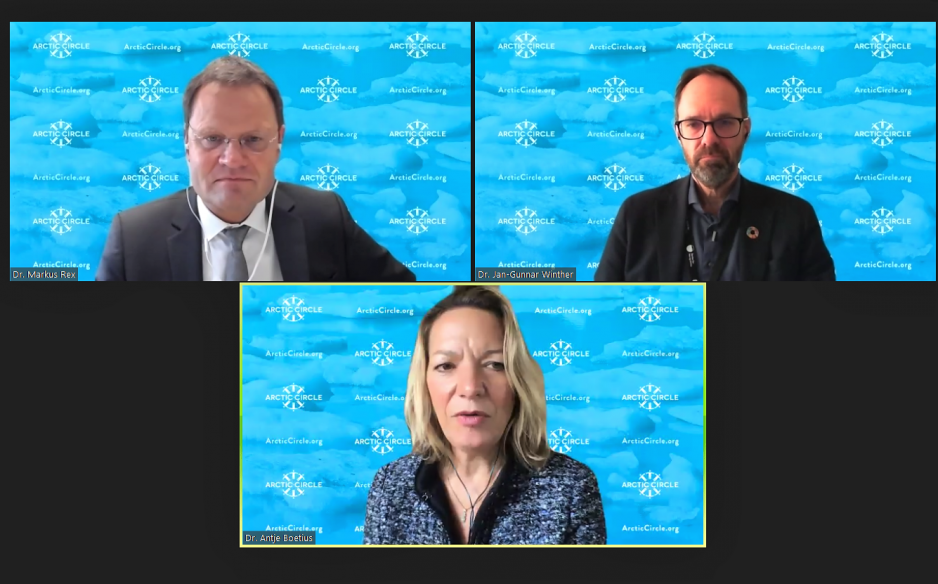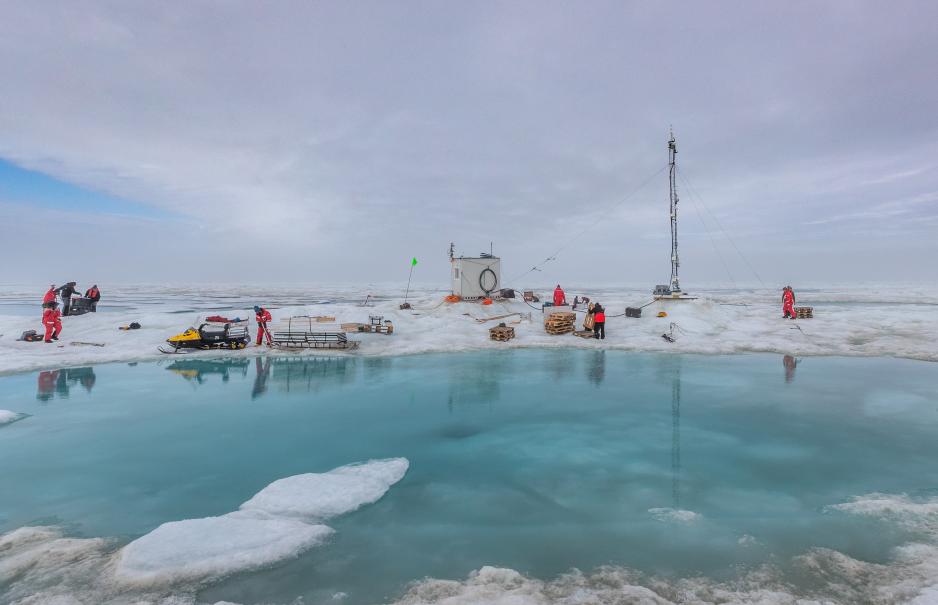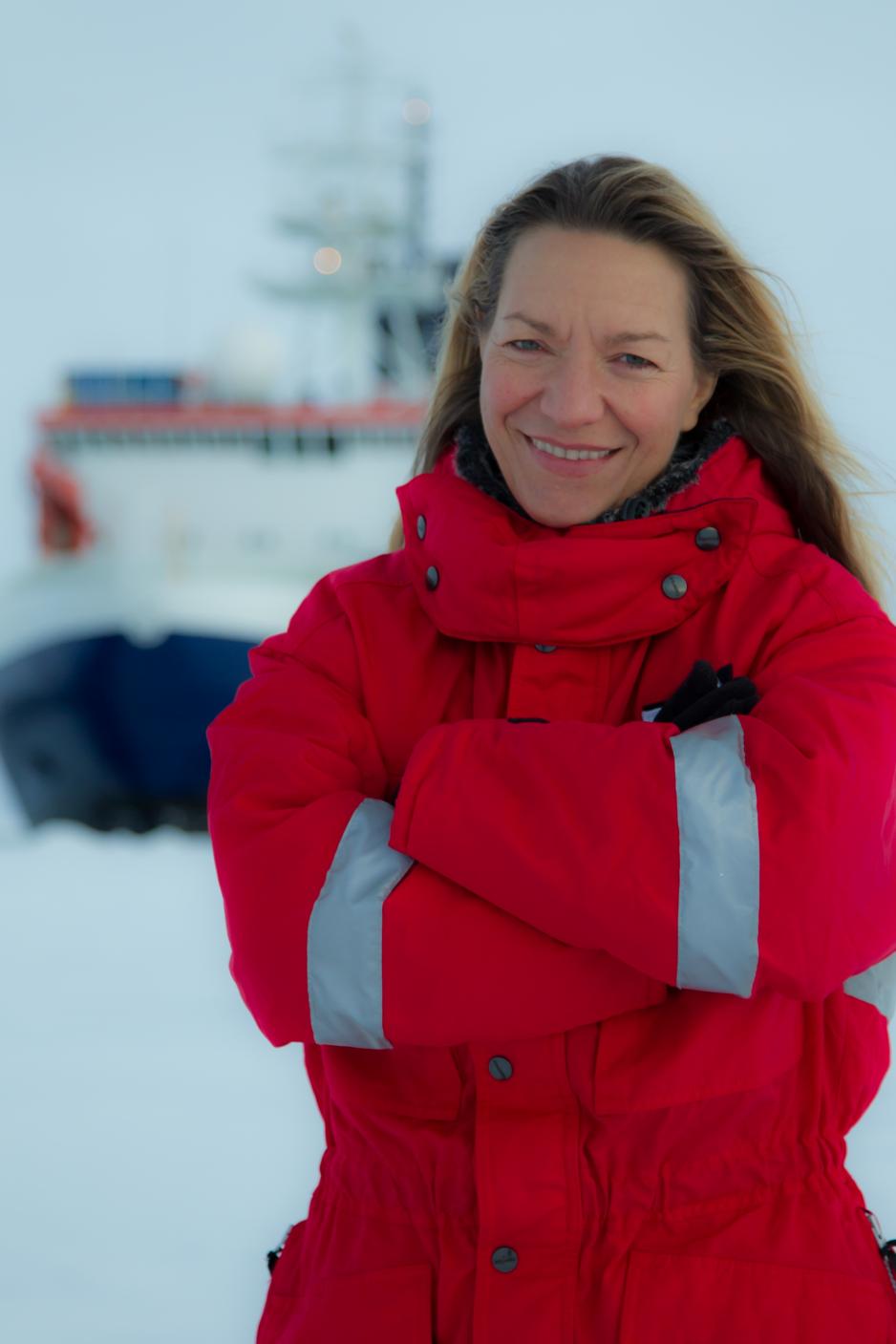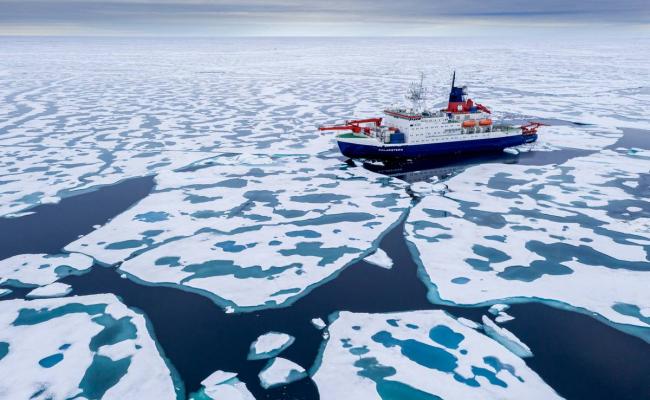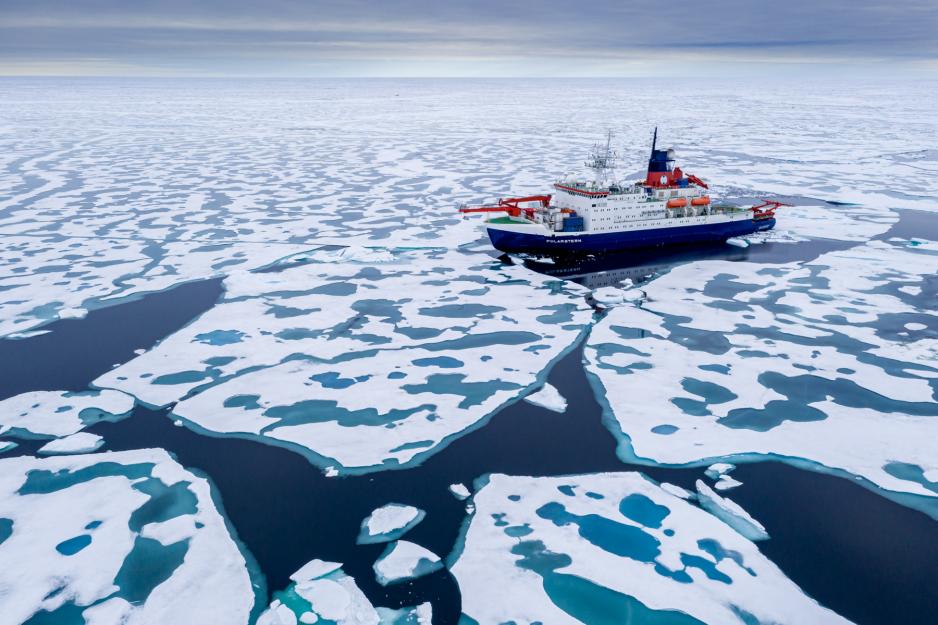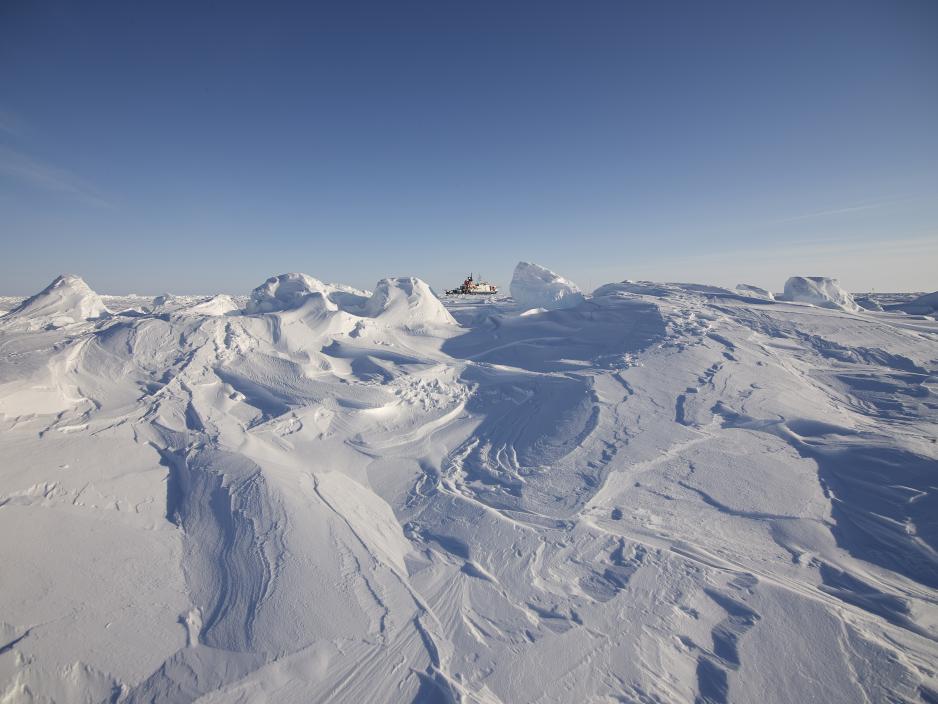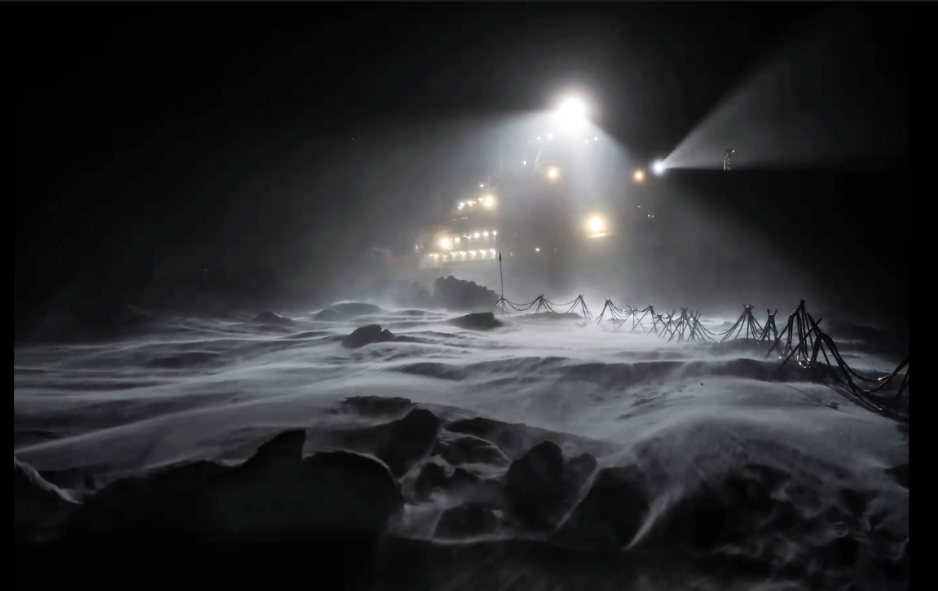“Polarstern” Crew After A Year Trapped in the Sea Ice: “Nature Is Still Boss in the Arctic”
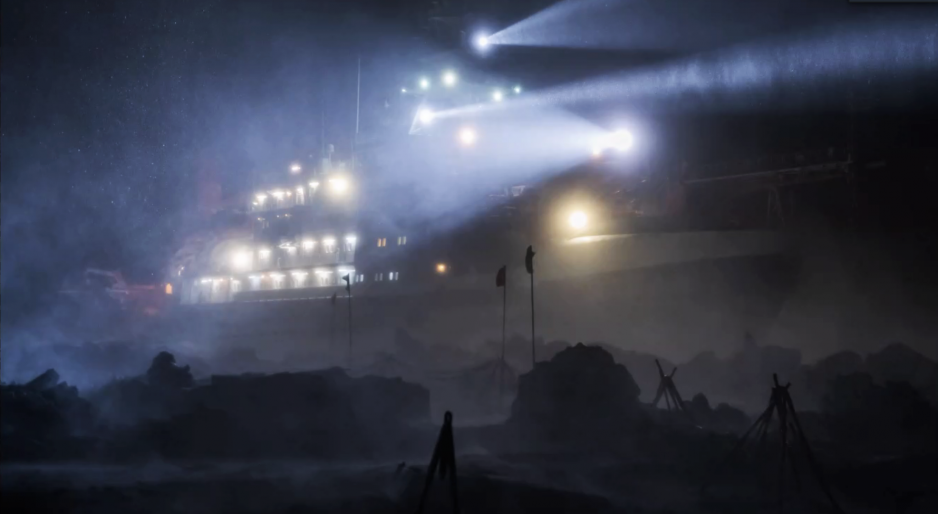
Mosaic expedition´s "Polarstern" trapped in ice. (Photo: Mosaic)
Pitch black darkness, eternal daylight, crushing ice and a successful historic journey through one of the world's most inhospitable places to prepare human kind for what is to come. The Mosaic expedition is back - with stories to tell, and unique research.
“We reached our goals”, Dr. Markus Rex exclaims with a smile.
“We now have a deeper understanding of how the Arctic works.This will lead to more robust climate research and decisions in the future.”
Markus Rex is Professor and MOSAiC Expedition Leader at the Alfred Wegener Institute, Helmholtz Centre for Polar and Marine Research.
Brings back unique data
The research icebreaker “Polarstern” has now spent a full year trapped in ice while drifting through the Arctic Ocean. It concluded its journey and returned to Bremerhaven, Germany in the middle of October 2020.
“Polarstern” has brought back with her unique data from the Arctic.
During an online event by the Arctic Circle Forum, Dr. Rex and his colleague Dr. Antje Boetius shared stories from an alien, frozen landscape.
“We saw the great night of eternal light during summer, where the sun circles the horizon day and night with colours it is hard to imagine. There were some unforgettable moments”, Rex explains.
A melting race
But the researchers bring back more than happy memories. The rapid changes in the Arctic are disheartening.
“The sea ice is disappearing and around Greenland we sailed through open water during the winter. During Fridtjof Nansen´s Polar expedition, -50 degrees Celsius was often reported during winter. On our journey, the temperature never fell below -40”, Rex says.
He calls it a melting race; the dismantling of an ancient ecosystem.
“But it is a place of unique beauty.”
20 countries involved
Mosaic is the largest Arctic expedition in history. In September 2019, the German research icebreaker “Polarstern” set sail from Tromsø, Norway to gain fundamental insights into the Arctic as the epicentre of global warming, and to better understand climate change.
The dismantling of an ancient ecosystem.
Hundreds of researchers from 20 countries have been involved in this exceptional endeavour, and the data gathered from the expedition will be used by scientists around the globe to take climate research to a completely new level.
Dr. Rex is accompanied by fellow researcher Dr. Antje Boetius. She is Director and Deep Sea Researcher at the Alfred Wegener Institute Helmholtz Center for Polar and Marine Research.
Open to the public
This researcher is no stranger to challenging conditions and has participated in more than 50 expeditions on international research vessels.
But the Mosaic expedition was different. For a whole year, the ship and its crew were completely open to the public and invited it to participate via WhatsApp.
“We shared photos and had data streams throughout the year. We also brought participants from media to document the landscape as eye witnesses of the eternal darkness. Where human technology met the ancient ice”, Boetius poetically describes.
A game-changer
“This constant openness has changed the way we do research. We question ourselves all the time now. How do we do research? How do we deal with the pandemic and so on”, Boetius says.
She was eager to observe how the international collaboration played out in isolation, what the resilience of the scientists in this dynamic world would be like.
“This international science collaboration is a game-changer. Thousands of sailors around the world were locked in on their ships because of the pandemic. But we – the 20 nations together - were able to bring research out to the world during this. Together we can be better people”, Boetius says.
“For the future of the Arctic is the future of the world.”
"Boots on the ground"
The presentation was led by the Director of Centre for the Ocean and the Arctic, Jan-Gunnar Winther. He was clear about the importance of “having boots on the ground” in the High North.
“For the Arctic is changing. And what happens in the Arctic, affects the world. It is up to the world's leaders to act on this international collaboration towards a common goal”, says Winther.
He believes this historic expedition will leave a legacy for years to come.
“What is so unique about this expedition is the fact that we brought a modern vessel close to the North Pole during winter. This is where the sea ice is too thick for a ice breaker”, explains Markus Rex.
Therefore, the only way in is to follow the ice.
Species migrating north
During the expedition, Polarstern´s researchers were busy sampling organisms that live in the ice and in the water. These will be identified later. But what surprised the crew the most, was the observation of species of Atlantic fish during winter.
Also read:
“That was unexpected. It means Atlantic species are on their way north”, says Antje Boetius.
Weakens the Jet Streams
Altogether, the changes they observed were dramatic. Now, the data will be used to improve climate models to better predict what is to come.
“The Arctic is warming at a pace we could not have foreseen. This causes a decrease of temperature that is affecting the jet stream to cause extreme weather like heat waves in summer and colder winters”, says Rex.
This causes slower, weaker jet streams that, in turn, are linked to ice melting in Greenland and extreme weather systems locked into place, stalling them over regions.
Synchronising the observation of life
Dr. Rex nevertheless wants to make it clear that the expedition was not about observing climate change, but about observing the Arctic as it is right now, as well as the process taking place.
“We wish to better understand the process of the warming of the Central Arctic. We can now look at the process and add this input to the climate models in order to predict the future. This is our last chance to observe the Arctic as it is now. With this rapid change, it will be too late in 20 years”, Rex explains.
Boetius elaborates;
“We wanted to synchronise the observation of life in the Arctic. To observe it all at the same time from the ice and from satellites”.
Not possible in five years
“Will it be possible to repeat this expedition in five years?” Jan-Gunnar Winther wonders.
“No. What is next now is to create a pan-Arctic observation using Mosaic and the public. But this is a work in progress”, says Antje Boetitus without hesitation.
The scientists paint a mental picture of drama, pitch black darkness and a fully alert Mother Nature.
“Our vessel is a heavy-built ice breaker. The crew trusted “Polarsten” to hold up against the force of the ice. But the noise and the power of the ice is impressive!” says Markus Rex.
Nature is still Boss
Imagine waking up to sounds of crying babies or cats when you know that you are all alone surrounded by crushing ice. According to Rex, this is the sounds of the ice fastening its grip on the ship.
“And you can feel the ship move. The nature is still boss in the Arctic”, the scientist states, still in awe from the experience.
It means Atlantic species are on their way north.
Rex still believes there is a chance to keep the summer ice in the Arctic. If the world turns around now.
“In couple of decades from now, it will be too late. But if we reduce emissions now, we could keep the summer ice. But more pessimistic scenarios tell of ice-free winters as well”.
No Arctic preparedness
This summer, heat waves entered the Arctic with as much as 30 degrees Celsius in Siberia. So if all goes wrong and these processes are combined in the wrong way, it may happen.
Does that mean that the time frame for shipping services in the Arctic can be extended to five months per year?
“If the melting continues, the time between May and September can be a new shipping season. But remember that there is no infrastructure in the Arctic. No rescue or preparedness. We have to discuss Arctic safety before we open up shipping any more”, Boetius warns.
And connectivity is also low in the High North.
“We still do not have good telecommunication in the Arctic. Elon Musk´s starlink (SpaceX) did not provide any help either”, Boetius says.
Better climate models
When the new climate models based on the Mosaic research are finished, they will be used in preparation for the rapid changes for, amongst others, local communities in the Arctic.
“Planet Earth makes humanity. We would not be here as we are without a somewhat stable climate. Now, Europe as a whole has to use science, technology and innovation together”, states Markus Rex.
Back on solid ground, he is pondering over the year under the Arctic sky.
“We shared the same spirit. We knew we where alone out there. We knew to care, watch each other and look out for each other. Sometimes we experienced conflicts of interest, but it was all resolved in a good way”, says Rex.
“And we also had good medical help and advice from psychologists. That helped”, Antje Boetius adds in closing.
If you wish to read more about the Mosaic expedition, you can find updated data and information on their website.


